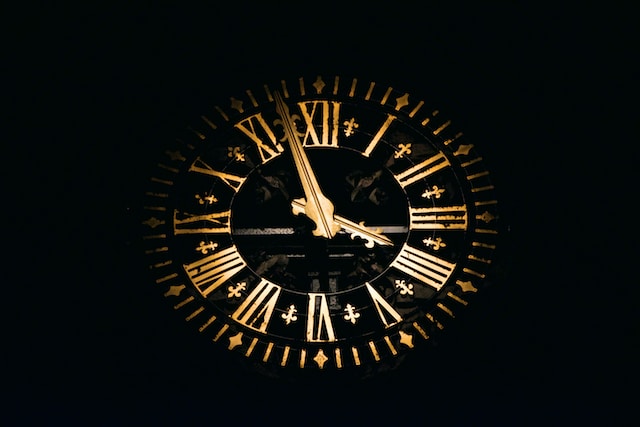Eureka-ka-ka-ka
One of the – numerous – problems with Indiana Jones and the Kingdom of the Crystal Skull is how unnecessary it was. Perfect film trilogies are as rare as vegan sharks, especially popular ones. For me, the original Indiana Jones trilogy counts. Sure, many don’t like Temple of Doom, but just as is the case with Star Wars: Return of the Jedi, the weakest reviewed film of those original trilogies also happens to be the first one that I saw in the cinema, so for me they’re special. Moreover, ‘weakest reviewed’ they might be, based on Rotten Tomatoes, but not by much.
So, when Kingdom came out in 2008, it had a lot to live up to, but surely with the Lucas/Spielberg dream team in charge, it couldn’t go far wrong? Well, it says a lot that ‘nuking the fridge’ has entered the lexicon. I haven’t given the movie a second glance since that original viewing, but the very fact that the infamous scene wasn’t even the worst thing about it speaks volumes.
Rain at a festival is disappointing. Losing a game of sport is disappointing. Those kinds of disappointment can be dealt with. Now imagine growing up as part of the generation who blockbusters were invented for. Then imagine returning to the cinema 16 years after the apotheosis of the original blockbuster trilogy concluded and watching two hours of weak, sloppy political drama and finding one decent fight in a series of films literally about war. Watching The Phantom Menace back in 1999 as a Gen-Xer was a whole new scale of disappointment, and once it was released there was no going back. It just sat there like a smelly drunk bloke at a party that nobody liked and no one remembered inviting.
Kingdom wasn’t that bad. It was just weak and annoying like a strange toddler throwing unprovoked punches at an adult. It also debuted in a famously transitional year for cinema. Gen Xers read a lot of comics, but rarely saw their superheroes on screen, so Indiana Jones, Han Solo, and James Bond became our substitutes. I’d wager that few of the people packing out cinemas for the MCU – which began in 2008 – actually read the comics on which they’re based.
So here we are, 15 years later with Indiana Jones and Dial of Destiny in a cinematic landscape that perhaps hasn’t exactly changed beyond recognition – the blockbuster genre is simply reaching its logical conclusion – but it is a different landscape nonetheless, a different world, which is something the film acknowledges early on, finding Indy in 1969, after the moon landing.
This also feels like a different summer for cinema. While last year was all about Top Gun and Avatar, this year, with numerous big-budget releases, feels more like the blockbuster season of years gone by, maybe for the first time since the pandemic. Meanwhile, the MCU isn’t exactly floundering, but it is struggling to maintain momentum.
Going in, I’d managed to avoid spoilers, most of the trailers, and most of the hype. I knew people were talking about a ‘divisive’ ending, but I like ‘divisive’. I don’t like ‘bland’.
The good news is that it’s better than Crystal Skull, but so are both modern versions of The Mummy (yes, including the Tom Cruise one). The better news is that, though it has even less reason to exist than its immediate predecessor (other than cold hard cash, as one of its characters would say), it feels like a proper Indy movie and does manage to add something to the character and his world. Unfortunately, however, it’s still not really a contender for that original trilogy.
Losing Spielberg was bound to hurt and although James Mangold is a fine director there are some curious choices. This is easily the ugliest of the Indiana Jones movies, with a lot of sequences set at night using what seems to be entirely digital photography and lots of CGI. It lacks the pop of even Crystal Skull and at times is flat and messy. It’s also too long. It follows a structure that has now become most familiar from video games, which in turn harks back to Raiders and Last Crusade. The baddies (Nazis) and Indy are searching for the same artefact. In order to find it, they have to find another thing to tell them where said artefact is. It’s a cinematic fetch-quest.
My final criticism might explain why, as widely reported, the movie is struggling at the box office. We were the youngest people in the cinema. In fact, I’m pretty sure we were the only people still with both our original hips. This movie works on nostalgia, 100%. It doesn’t do anything new. At all. In a movie world dominated by superheroes, Indiana doesn’t offer anything to the kids, not anymore.
Having Phoebe Waller-Bridge in the cast is great, but her character is really no different to Marion, other than being English and a bit plummy. She’s excellent, don’t get me wrong, but if you hire Fleabag, then surely you want her to bring that edgy, new, feeling to your production? Yes, I know she can’t go around shagging priests and casually talking about bottomism in a 12A-rated movie, but as the primary younger protagonist it’s a shame that she feels so similar to Indy’s original partner.
All of this is fair criticism, but… But…
The nostalgia works, dammit. There are numerous callbacks to the original movies, all done with enough wit and charm to elevate them beyond on-the-nose ‘Easter Eggs’. Nazi assholes get their arses kicked. If I look half as good at 60 as Harrison Ford does at 80, I’ll be happy. It’s funny, it’s joyous and it’s tear-jerking.
When it closes, anyone who grew up with both Indy and Harrison Ford will likely realise that this was a necessary movie after all. As a ‘thank you’ to a cinematic legend who has entertained and thrilled us for almost half a century and left us with numerous classic movies…. Well, it’s a well-deserved tip of the fedora.
Image Credit: Thomas Bormans on Unsplash




